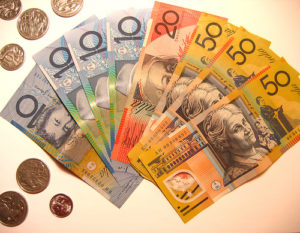 Australian dollar traded lower against its US counterpart on Monday, nearing the lowest point in five weeks, despite the upbeat industrial production data out of China released during the weekend while Australian home lending increased in September, as the prospects of a sooner than projected scale back of Feds quantitative easing were still providing support for the greenback.
Australian dollar traded lower against its US counterpart on Monday, nearing the lowest point in five weeks, despite the upbeat industrial production data out of China released during the weekend while Australian home lending increased in September, as the prospects of a sooner than projected scale back of Feds quantitative easing were still providing support for the greenback.
AUD/USD reached a session low at 0.9356 at 10:50 GMT, after which consolidation followed at 0.9360, losing 0.23% for the day. Support was likely to be received at October 1st low, 0.9289, while resistance was to be encountered at November 8th high, 0.9480.
The series of economic reports out of China, released during the weekend, boosted optimism over worlds second largest economy, suggesting a stable pace of economic growth. Chinese industrial production rose 10.3% in October on annual basis, exceeding expectations and the recorded pace in September, 10.2%. This data underscores the crucial role of industrial sector for overall economic activity in China and also, an increased demand for Chinese goods abroad. At the same time, the rate of inflation slightly accelerated to reach an annualized 3.2% in September from 3.1% in the preceding month, remaining within the targeted range by the Chinese government. China is Australias largest export market. However, the Aussie showed little reaction to this news.
Australian dollar was trading steadily earlier in the day, after a report showed that home loans in Australia increased 4.4% in September, following a 4.0% drop in August. However, the number of first home buyers as a proportion of loan commitments decreased, which indicated that such buyers have probably been priced out of the market. Investment lending in Australia expanded 5.2% in September, after a month ago it rose 0.6%, according to revised up data.
The Reserve Bank of Australia (RBA) “has noted that the improvement in the housing market is the result of lower interest rates unlocking demand for dwellings. And prior cuts to the cash rate are still making their way through the economy,” chief economist Michael Blythe at Commonwealth Bank of Australia wrote in a research note, cited by Bloomberg News. “We still see the RBA leaving the cash rate at 2.50 percent for a considerable period.”
Traders saw a 9% probability that the central bank will cut its benchmark interest rate by the end of this year, as the odds of such a move were 20% a month ago, swaps data by the same media showed.
The yield on Australian benchmark 10-year bonds climbed nine basis points, or 0.09 percentage point, to reach 4.22% today, after having touched 4.25% earlier, or the highest level since October 16th.
Meanwhile, the greenback was still supported after on Friday the Bureau of Labor Statistics said that employers in the United States unexpectedly added more job positions than projected in October. Non-farm payrolls increased by 204 000 in October, well above the expected 120 000 new jobs and above the revised up number of 163 000 jobs, added in the previous month. This data boosted speculation that the Federal Reserve Bank may consider a pare back of its stimulus program sooner than expected.
Elsewhere, the Aussie was lower against the euro, with EUR/AUD cross advancing 0.53% on a daily basis to trade at 1.4320 at 12:45 GMT. AUD/NZD pair was losing 0.19% for the day to trade at 1.1364 at 12:46 GMT.





